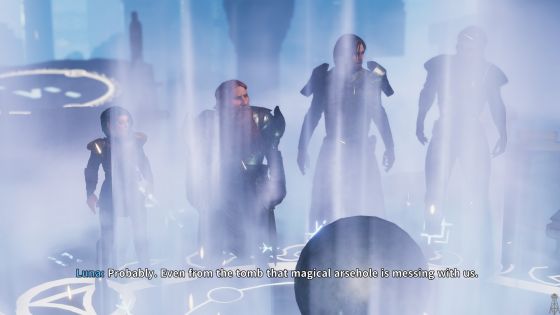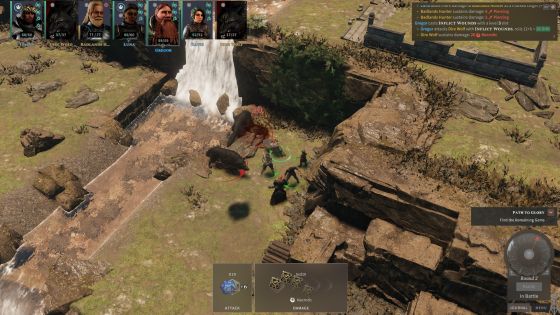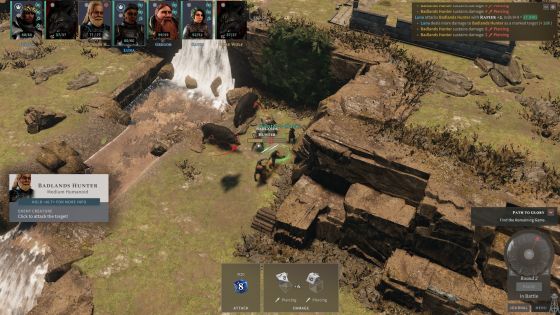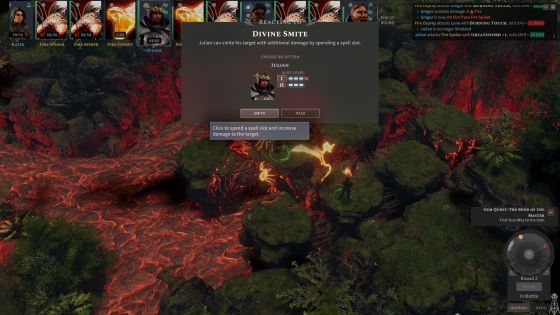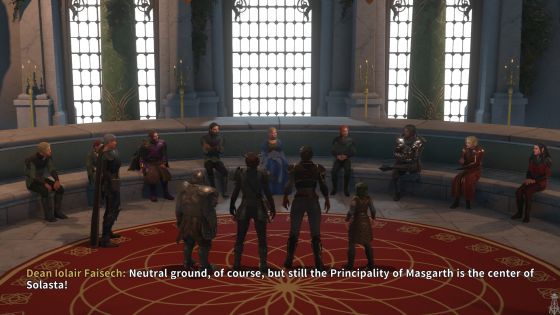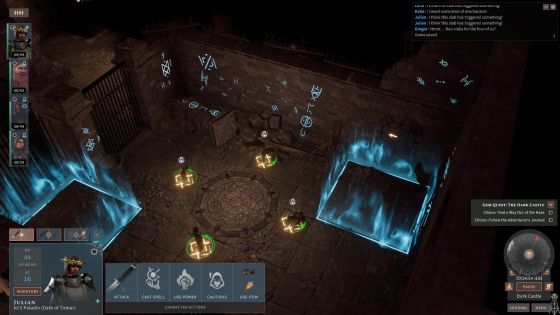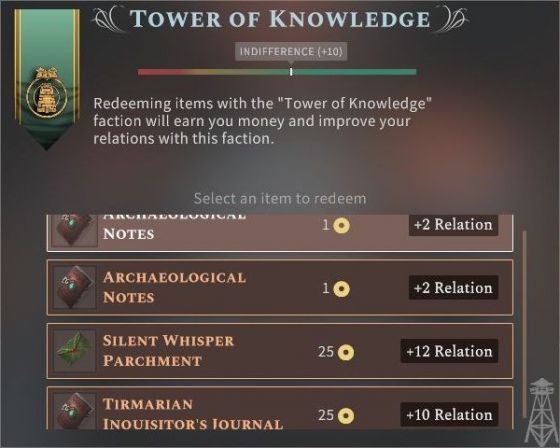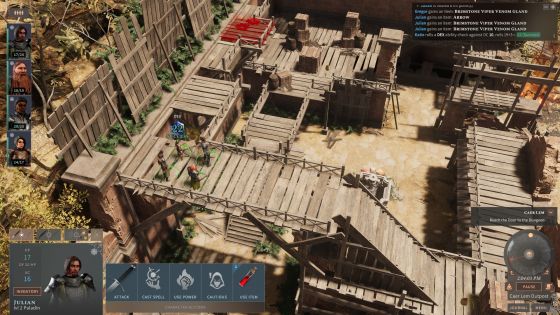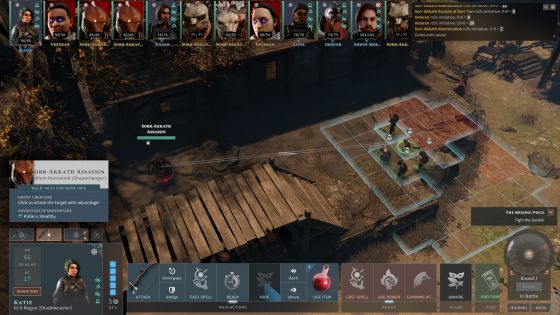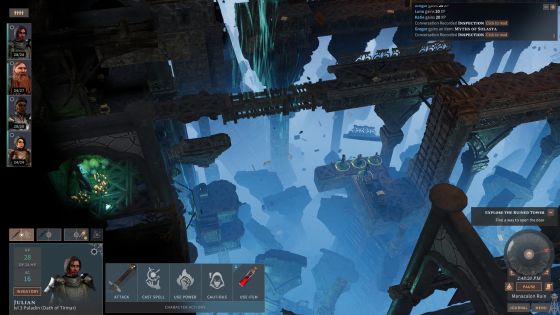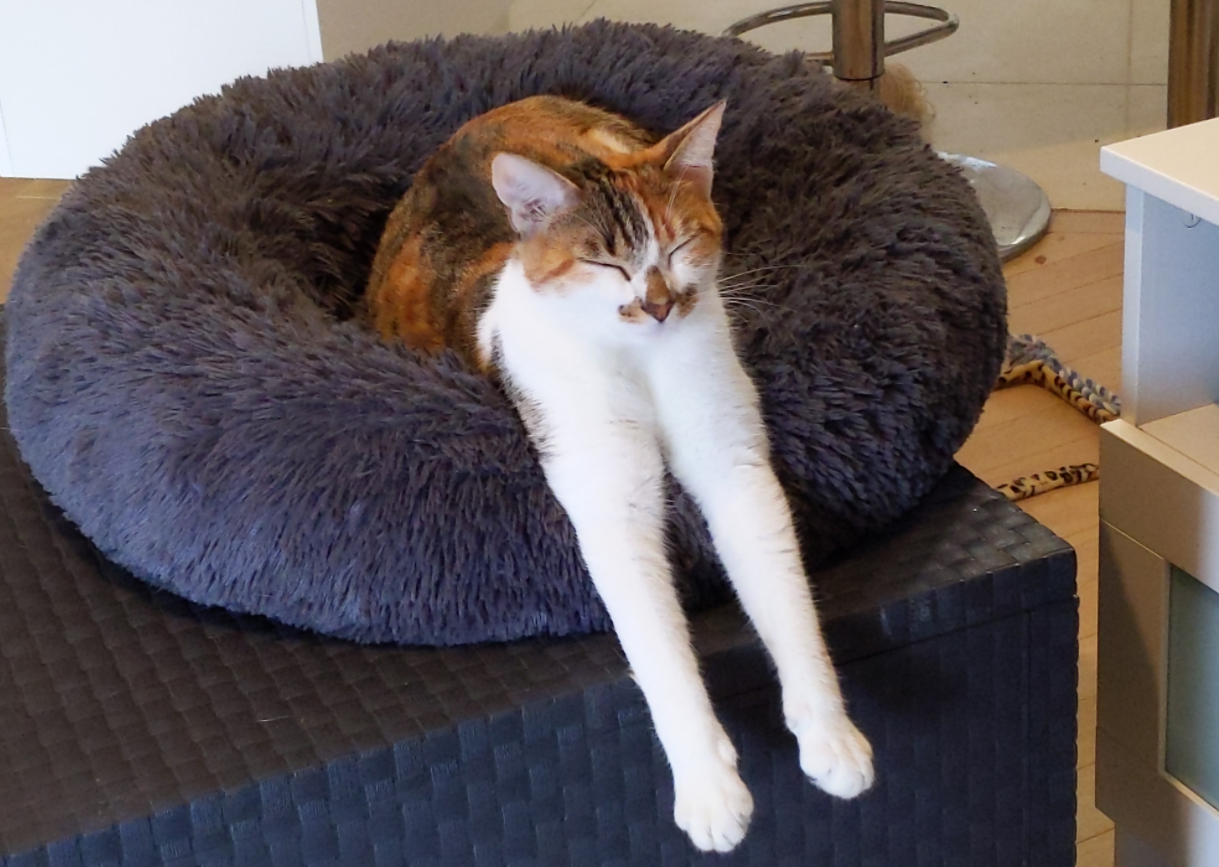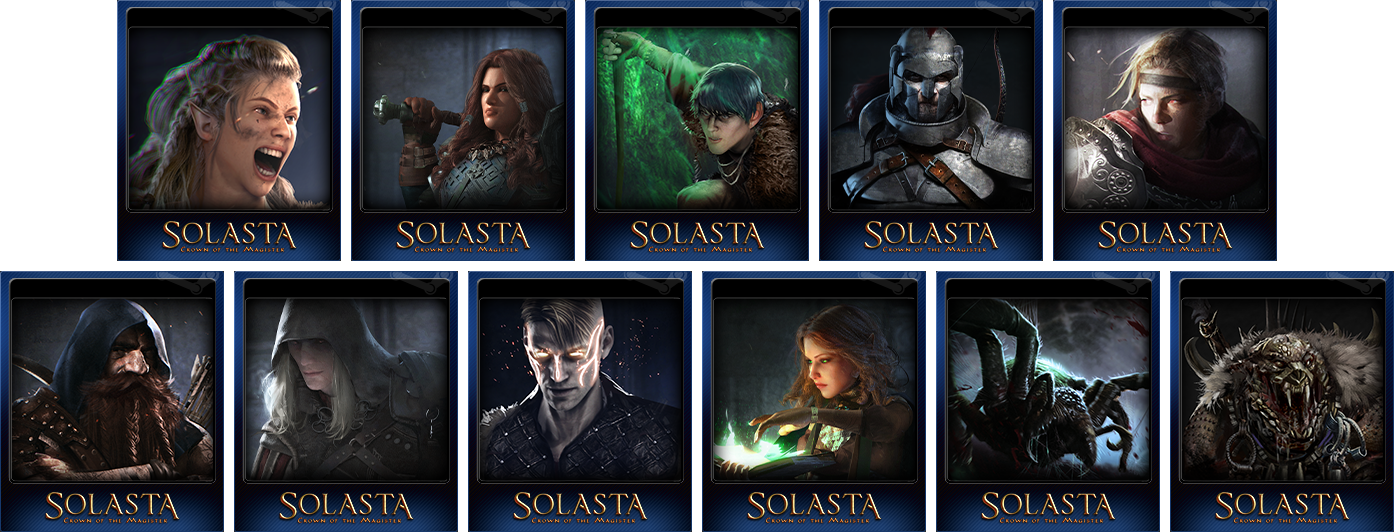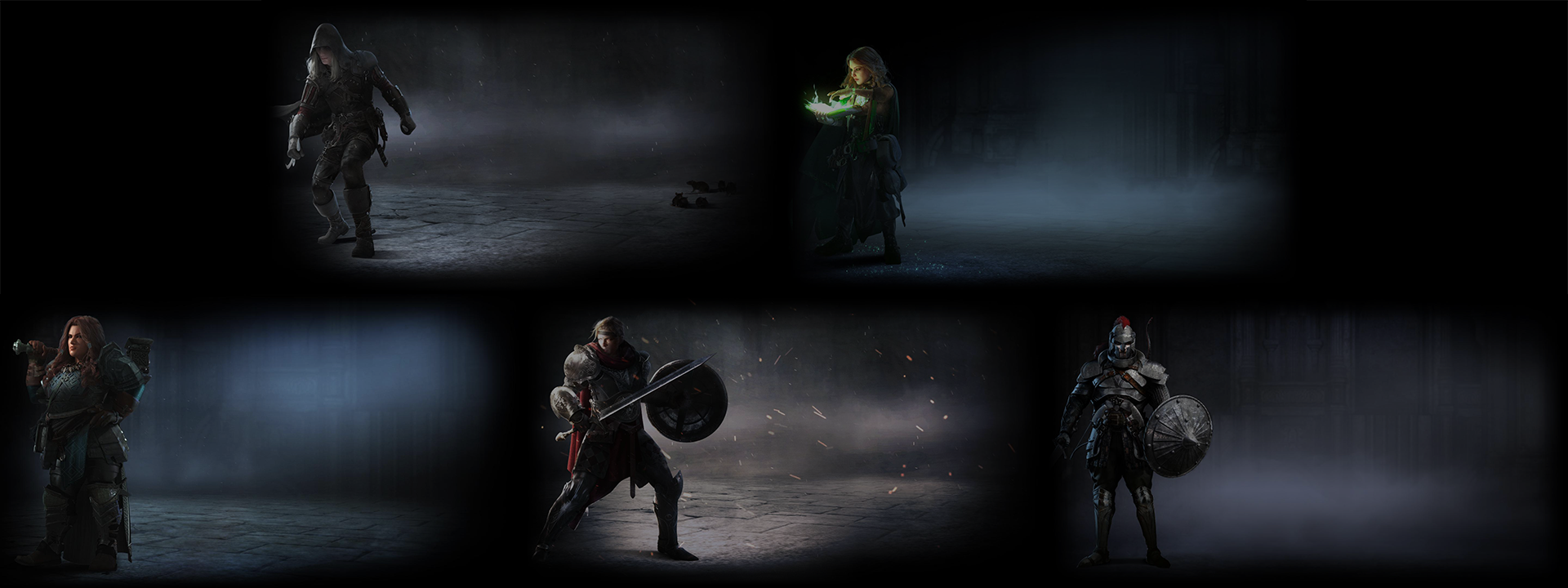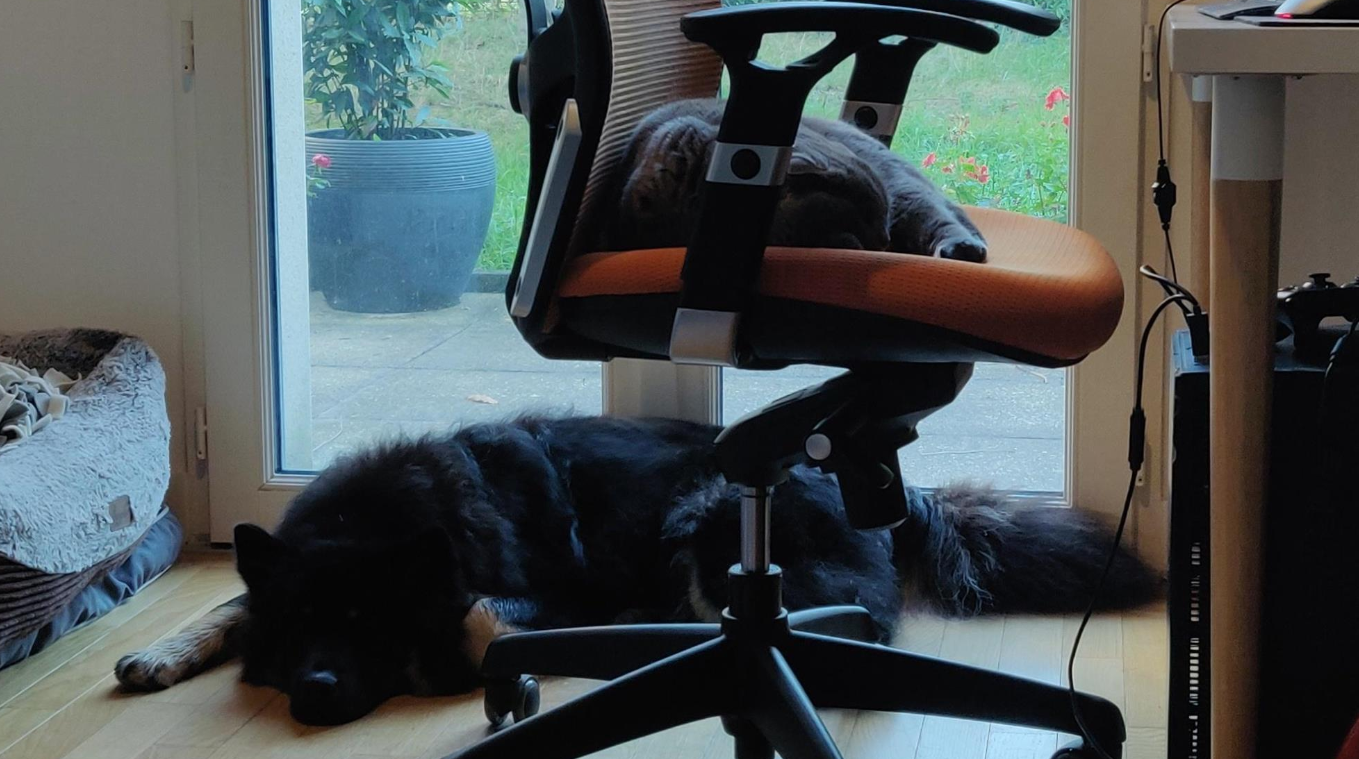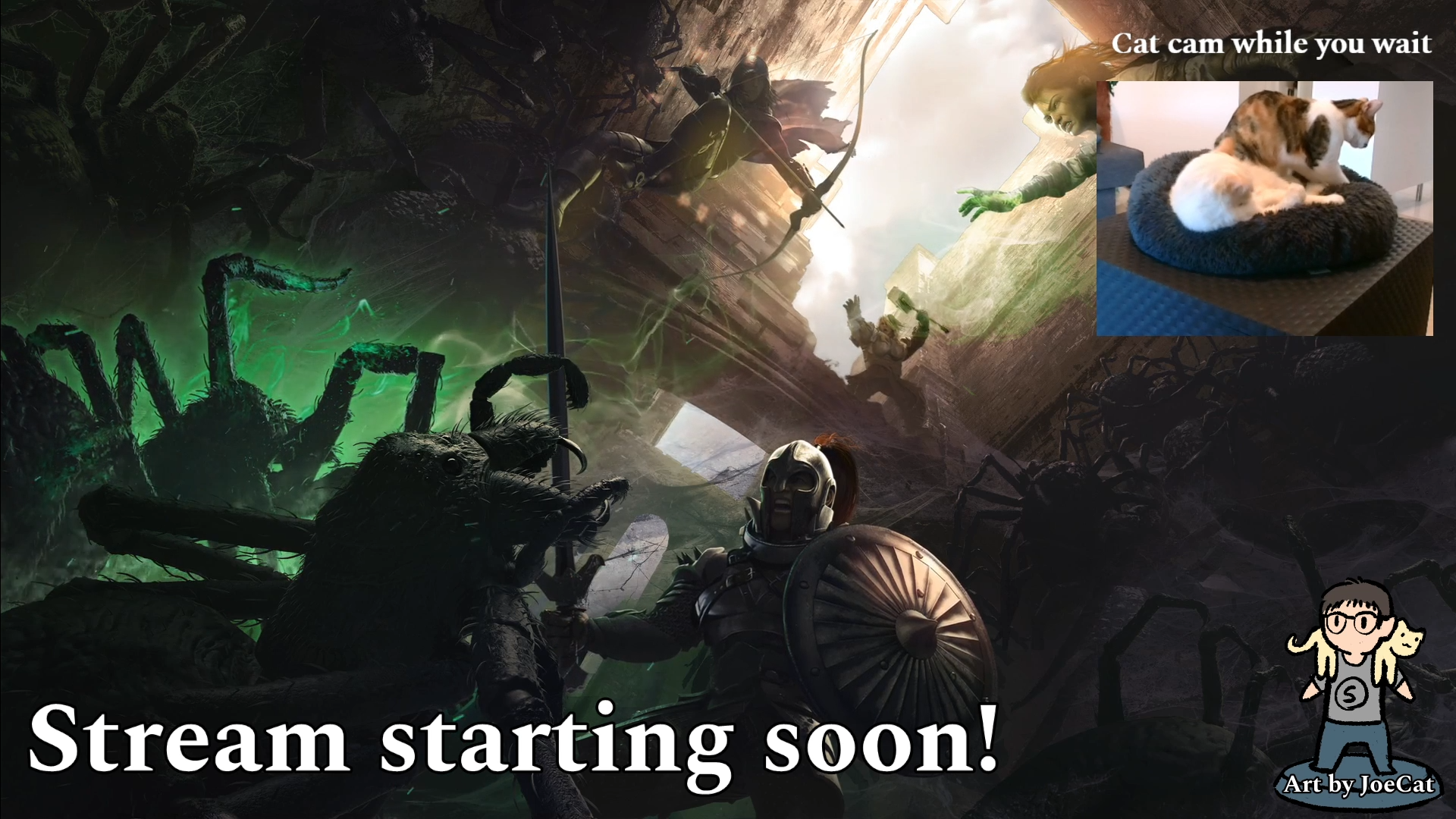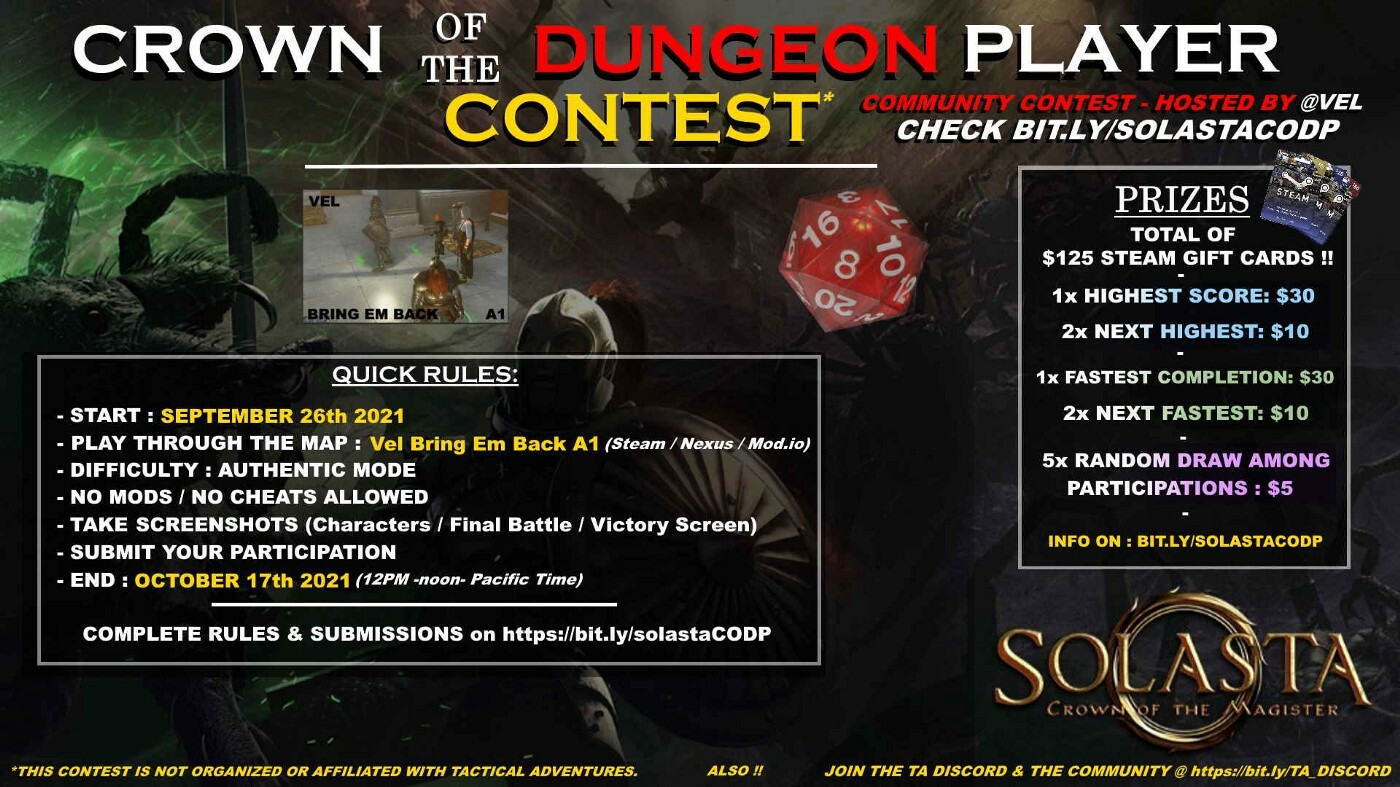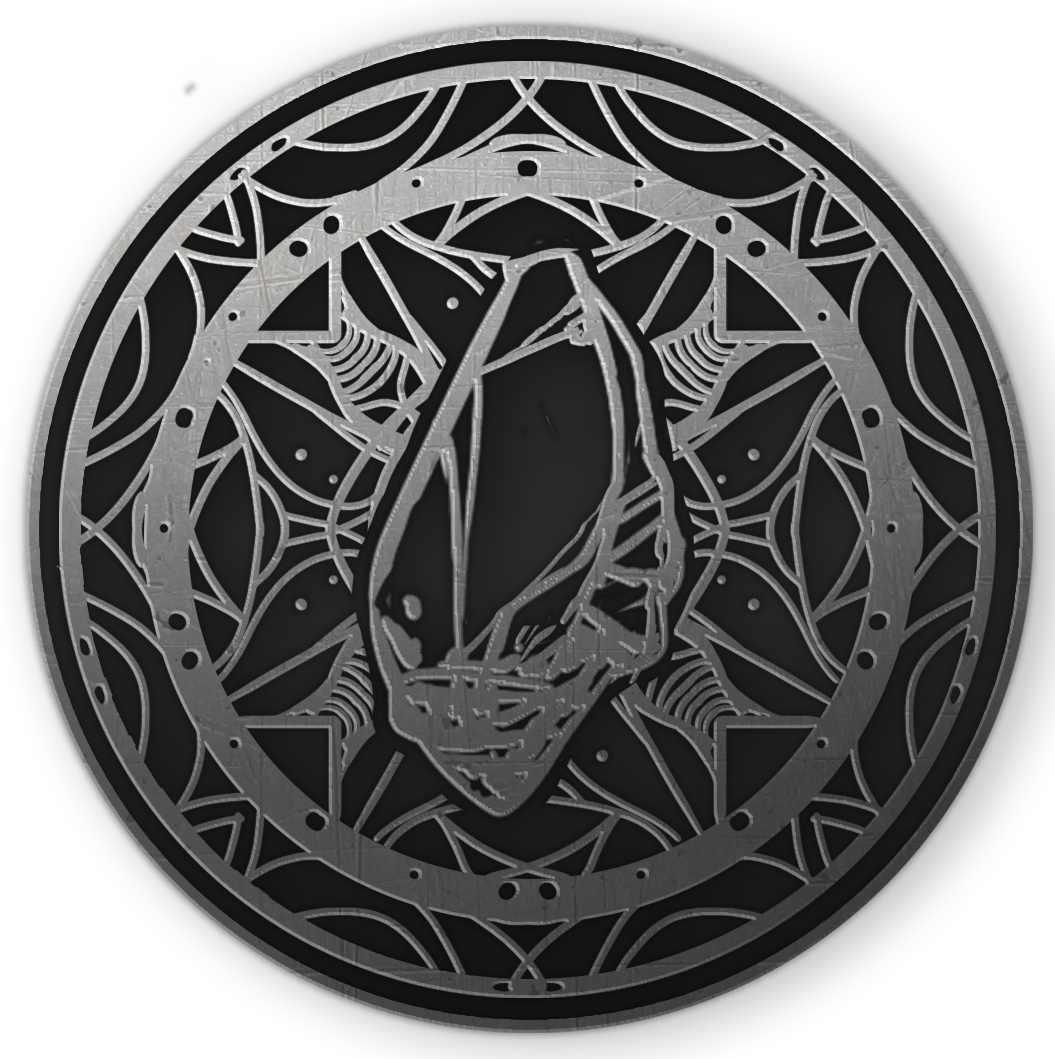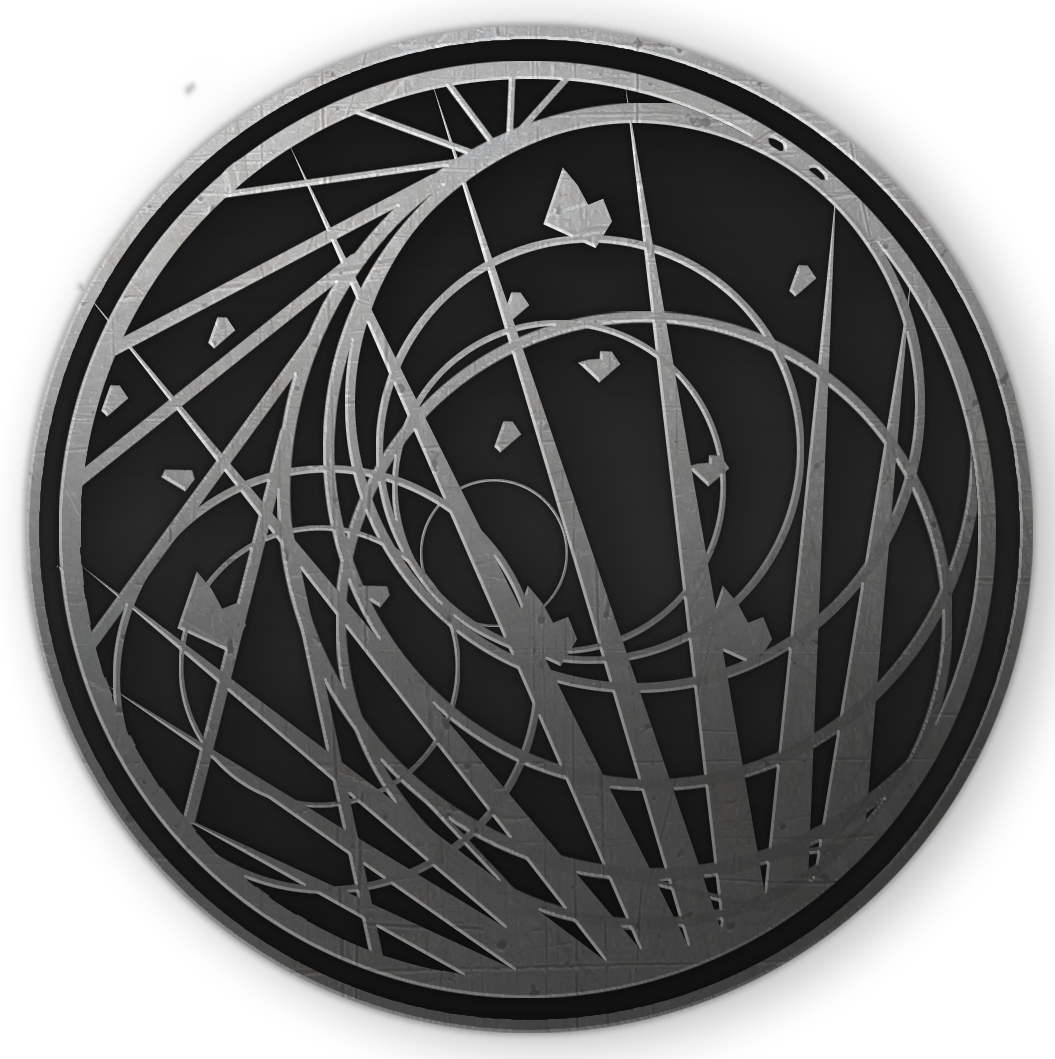- Joined
- Jan 28, 2011
- Messages
- 100,516















RPGWatch review: https://www.rpgwatch.com/articles/solasta--crown-of-the-magister-review-513.html
Solasta: Crown of the Magister Review

I started playing RPGs on the tabletop, and I can still remember my uncle surprised us years ago when he brought the D&D starter box with him on a visit. Since then I have been a huge fan of games which try to capture the feeling of a Dungeons and Dragons tabletop game, whether it is something pretty close to the original experience, like Temple of Elemental Evil or something more derivative like Pillars of Eternity. Solasta: The Crown of Magister is definitely more of the former. It does an excellent job of giving you the feel of a tabletop game, even actively rolling dice on screen each time your characters make an attack roll or attempt a persuasion check. What Solasta isn’t, and what could potentially disappoint some players, is a Baldur’s Gate. There’s no big open world, there aren’t tons of quests waiting around every corner, and there are no memorable companions for you to recruit. Its much more a linear quest that focuses primarily on dungeon crawling and combat. In that way its much more like the aforementioned Temple of Elemental Evil or Icewind Dale. You do have a hub, chat with NPCs, get an occasional side quest, can periodically talk yourself out of a conflict, and are rewarded for carefully combing maps. It’s just that those activities present you with an occasional change of pace from your main task, which is exploring and fighting your way through various dungeons, ruins, caverns, and other exotic locations.
Game Mechanics
Solasta is my first experience with the 5th edition of Dungeons and Dragons. The Crown of the Magister currently features six classes, each with 3 specialties and 4 races, each with 2 subraces. While this is only a portion of the 5th edition’s classes and races, I feel there are enough choices that I could (and probably will) replay it a second time and have a different enough party to make another playthrough interesting. I never play the recommended party in the initial playthrough of a game, and for my first playthrough went with a paladin, ranger, rogue, and cleric for my party.
I found Solasta does an excellent job teaching you its rules. The game starts off with an extremely memorable tutorial, where your four characters are sitting around in a tavern, bragging about their adventures to one another. We get to play each character one by one in these flashbacks, and at the same time learn about combat mechanics, skill checks, lighting, manipulating items in the environment and so on.
Even though you design all of the characters in your party yourself, Solasta does a far better job of giving them personalities than other recent party-based games do, In fact the only game which I consider comparable is Wizardry 8. In The Crown of the Magister you give each character 3 personality traits. Some of these are associated with certain alignments and others with certain backgrounds. I found it amusing how my scholarly dwarf was always polite and well spoken, whereas my ranger was always direct, undiplomatic, and insulted my other characters when they performed poorly in combat.
My paladin Julian is a good guy at heart, but he also has the violent trait, which comes out in his dialogue. My ranger Luna is abrasive and direct, which also comes out in her dialogue and combat banter.
While the combat mechanics in something like Pillars of Eternity are pushed into the background and often seem obscure, here they are front and center. You actually have colorful dice rolling (which you can customize) with different colored dice rolled to show things like whether an attack is made with an advantage or disadvantage, or what kind of damage an attack does. Also, the game does a good job of asking you if you’d like to use abilities that could help you out, whether its your cleric casting a shield spell, your thief rolling away from damage, or your paladin using his divine grace to buff his persuasion checks or smite his enemies. Solasta did an excellent job of teaching me most of its mechanics in game, so I rarely had to look anything up in its lexicon or felt confused by something happening. Now I can say I think I have a pretty decent comprehension of 5th edition D&D and could actually explain to someone the major differences from Pathfinder, or 2nd edition D&D.
Above my dwarven cleric is casting cause wounds, and his necrotic damage is rolled out with black 10 sided dice. My ranger Luna below attacks with a rapier, and for the piercing damage from her weapon and hunter's mark spell, light grey dice are rolled.
The game also offers quite a crafting system. Unlike other games, crafting takes game time, but so does traveling from place to place or resting. Most of your party’s crafting activities, which require the proper blueprint to complete, will happen as you travel around. Crafting is also class dependent. There is a smithing, poison, alchemy, and enchanting kit, and not all classes can use them all. Only my Paladin and Cleric could brew potions, for example, and no one in my party could enchant, probably because I had no wizard or sorcerer. In any case I always stocked up on components when I went to town, so I could craft acid arrows for my ranger and thief or brew healing potions while I was underway.
My paladin has just hit an enemy with his sword, and the game is now giving him the option to smite, and explaining how that would work, should he choose to do so.
Story and Atmosphere
The Crown of the Magister’s story is fairly typical fantasy fare. Following an apocalypse, an ancient empire was destroyed, throwing the world of Solasta into a dark age. As the game starts, civilization is creeping back and an alliance of nations and powers are seeking to reclaim the lost knowledge and magic of the past. The only problem is that these relics are located in the so called “Badlands” which have been overrun by all sorts of nasties. This is where your characters enter the story. The Council, whose members represent various nations and powerful organizations, are appointing deputies to go on expeditions in the badlands and recover artifacts from the fallen empire. Alas, digging into the past doesn’t only have positive effects. An ancient evil has arisen once again, and its agents also have an interest in the ancient treasures, putting them on a collision course with your party of adventurers.
Our bosses on the council often argue amongst themselves.
While Solasta’s story won’t overwhelm anyone with its originality, players who have taken part in an official Dungeons and Dragons campaign will feel right at home. The game isn’t all that narrative heavy, and the story is primarily there to lead the party from one exotic location to another. The story also starts stronger than it ends, though that has more to do with the quality of mystery present at the story’s beginning than uneven writing. The Crown of the Magister’s locations are well designed. While there is a world map you traverse, the game is pretty linear. Normally one main location appears on the map after another in a specific order, the locations themselves are beautifully done, bringing us into ancient ruins, not so abandoned fortresses, deep caverns, mining towns, volcanos, and arcane towers. Each location also has its own flavour, in terms of what monsters, environmental challenges, secrets, puzzles and NPCs are present as well as how the level itself is structured. The level design is in my opinion really top notch, with a few secrets, puzzles which range from simple to more complex, and of course, combat encounters. There are some areas with multiple NPCs whom you can negotiate with, while others are full of enemies, hazards, and puzzles.
Most of the game's required puzzles are very straightforward, but there are some treasure chests I could see, but had no clue how to reach.
Dialogues in Solasta vary a bit. Most of your discussions are fairly linear, where you have to pretty much click on all the options to advance the story and dialog. Still your characters will ask questions and make comments based on their personality traits. Discussions with potentially hostile or unhelpful NPCs work differently and normally give you different approaches which correspond to various skills you can use. I tend to run persuasion heavy parties, and in my case both my paladin and rogue were able to convince unfriendly NPCs on a number of occasions to help without resorting to violence.
Luckily my ranger has made her insight skill check, so I can see the chance of success of my dialogue choices. I probably would have gone with my paladin anyways, as he's got people skills.
Solasta also has its own faction system. The various factions of the council are interested in knowledge from the ruins. You will find some of these ancient texts in plain site as you accomplish the main quest, while others will really require you being perceptive to not overlook. Not all texts interest all factions, but many of them interest 2-3 groups. Unlike similar games where factions are openly hostile to each other, in The Crown of the Magister the main advantage of turning these items in, is to give you access to rare and more powerful items. Each factions has their own specialty as well. One has a lot of great crafting recipes, while another has an armory of magical weapons, so you will probably want to carefully consider who gets what.
I can sell these items to the Tower of Knowledge to improve my reputation with them, so that I can buy some of their special items, but that means not having access to items of other factions.
In addition to the main quest, you will get a few side quests from time to time. Most of these will require you to go back to old locations to find a specific item. But there are also a few which take place in town or open up a new location. All these are optional and the rewards they offer are fairly minor for the most part, which means you can really skip a number of them if you want to.
Dungeon Crawling
When the Solasta developers made their pitch on Kickstarter, they sold their game on its use of light, height, and terrain. While many D&D type games in the past have had dark areas, in which a light spell or a torch provided extra vision, Crown of the Magister takes this further. Like many games you will find burnt out torches and arcane devices which can be lit. The main difference here though is, if an enemy is in a dark area, you have combat disadvantage against them, making it significantly more difficult to hit. There are a number of ways to negate this. Basically, all non-humans have dark vision which cancels this out, unless enemies are at very long range (but then they will also try to close the distance, because they are also at combat disadvantage if they are outside dark vision range). There are also plenty of spells, like dark vision or fairy fire, which can help humans. In my playthrough light was only an issue initially. When my cleric hit level 3, he memorized a dark vision for my human ranger, and after that I almost forgot about light altogether, except for illuminating dark rooms by lighting torches.
Height and terrain kind of go hand in hand. Solasta does a good job at concealing treasure chests. And sometimes you will see a treasure chest, but it won’t be apparent how to reach it. The athletics skill plays a big roll here. Character will have to climb, jump from cliff to cliff, push stone pillars and boulders, and squeeze through cracks in the wall. Some areas can’t be reached without flying or levitating, which are two spells The Crown of the Magister makes good use of that are normally ignored by computer games. Terrain also plays a pretty interesting role in combat. Cover is important, mostly in ranged combat and so is line of sight. A rogue especially can hide at the end of their turn if they can use terrain to break line of sight with all enemies. You can also use terrain to break line of sight to frustrate enemy archers and spellcasters.
This fort has verticle levels and some areas that can only be reached by jumping or flying. My thief has also detected a trap, which she can attempt to disarm.
I found stealth worked well in Solasta. In most other games of this type I ignore stealth almost entirely, because I find it more trouble than its worth. Crown of the Magister does an excellent job at telegraphing about how far away your character’s movement can be heard as well as when you enter enemy line of sight. A standard tactic for me was to move my rogue and ranger into ambush position, while keeping my cleric and paladin just outside of listening distance. I’d get my ranger somewhere where she could snipe enemies from behind their cover and my rogue where she could fire sneak attack shots from concealment, and then after surprising my enemies I’d charge in with the paladin and cleric. I was often able to pick off a number of enemies before they could react, which in a number of encounters more than made up for not having an arcane spell caster in my party.
Here I can see line of sight and that my party is in stealth. I also see that Katie can sneak attack her reptilian opponent, and has advantage against him, meaning she rolls twice to hit and takes the best roll. Doesn't look good for the bad guy.
Like in most RPGs that take place on a tabletop and not in a computer, Solasta’s maps only have a handful of combat encounters, but they take a fair amount of time to complete. I found the turn based combat for the most part pretty entertaining. Also, you can’t rest anywhere. Most larger dungeons will have a campsite where you can perform a long rest, but you need to manage your resources, because most maps have a tougher fight at the end.
Presentation
Its been a good while since we’ve had an AAA party based isometric RPG. Solasta has beautiful maps and terrain, but elsewhere the game is less attractive. Especially in the cut scenes the character models speaking animations could use improvement. On the other hand, Solasta can compete visually well with games like Pathfinder: Kingmaker and Pillars of Eternity or Wasteland 3, which also are weakest when one examines things close up.
The voice acting in Solasta is very uneven. As a rule of thumb the bigger the speaking role, the better the voice acting. Most major NPCs as well as the PCs themselves are voiced by competent, if not excellent, voice actors. The voice acting of the minor NPCs range from competent to grating and amateurish speakers. There are a large amount of voiced cut scenes in the game. This includes almost every NPC who has a role in a quest, as well as almost every merchant. Only NPCs like guards or generic bystanders have unspoken text.
This library is one of the fantastic places you'll visit in the course of your adventure.
Summary
Solasta is one of those games I had a hard time putting down and occasionally got lost in. And that despite its weaknesses. Yes, the story is nothing to write home about. The presentation could have been better. The majority of side quests were largely backtracking to old maps and fighting a new battle there. The game is fairly linear. And yet despite all of those things, I enjoyed the game immensely. Crown of the Magister hits the nail on the head with its core gameplay. Combat is fun and easy to understand. Deciding which faction to give artifacts to and improving your characters seems meaningful. Your self-designed PCs get more personality than just what you make up in your head. Level design is well done and that makes navigating the maps entertaining. The game also does an excellent job capturing that familiar heroic fantasy feel, and for me it felt comfortable, like rewatching a film I love, but have seen countless times, rather than feeling cliched or stale. Solasta is a game of decent size, and it took me over 40 hours to complete, even though I left a few side quests unsolved. I sincerely hope that Tactical adventures gets the chance to bring us another adventure in the Solasta universe, even it doesn’t iron out any of the many flaws of Crown of the Magister. With a few improvements though a good D&D CRPG could be succeeded by an amazing one.
Summary
Pros
Cons
- Excellent level design
- Beautiful Locations
- Fun combat, especially the use of terrain
- Teaches is its mechanics well
- Well done personality system
Rating: Very Good
- Uneven voice acting
- Unoriginal story
- Fairly Linear
A very good game that is just short of being excellent, because of one or more minor issues that reduce the level of enjoyment a little bit.
Review version
Steam








